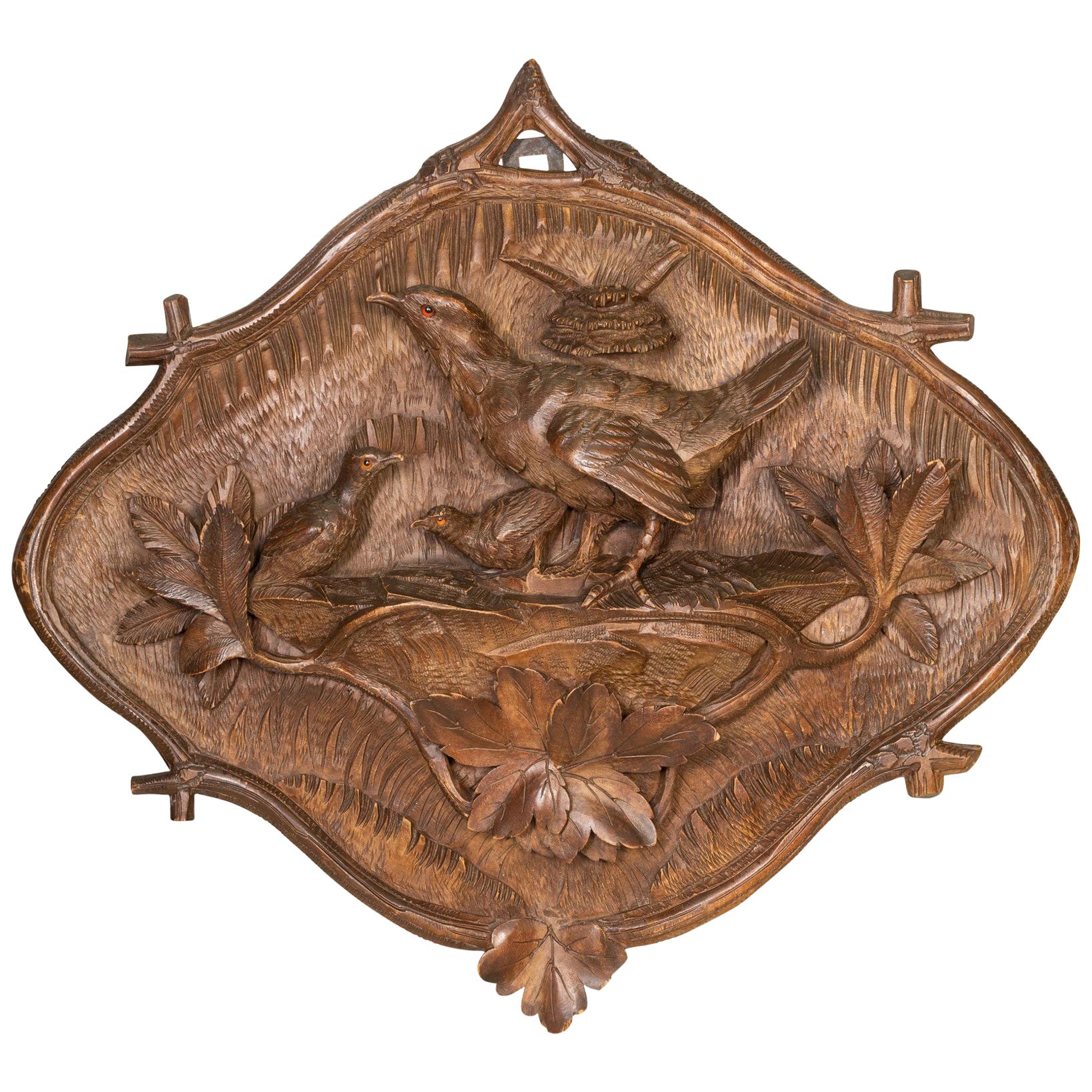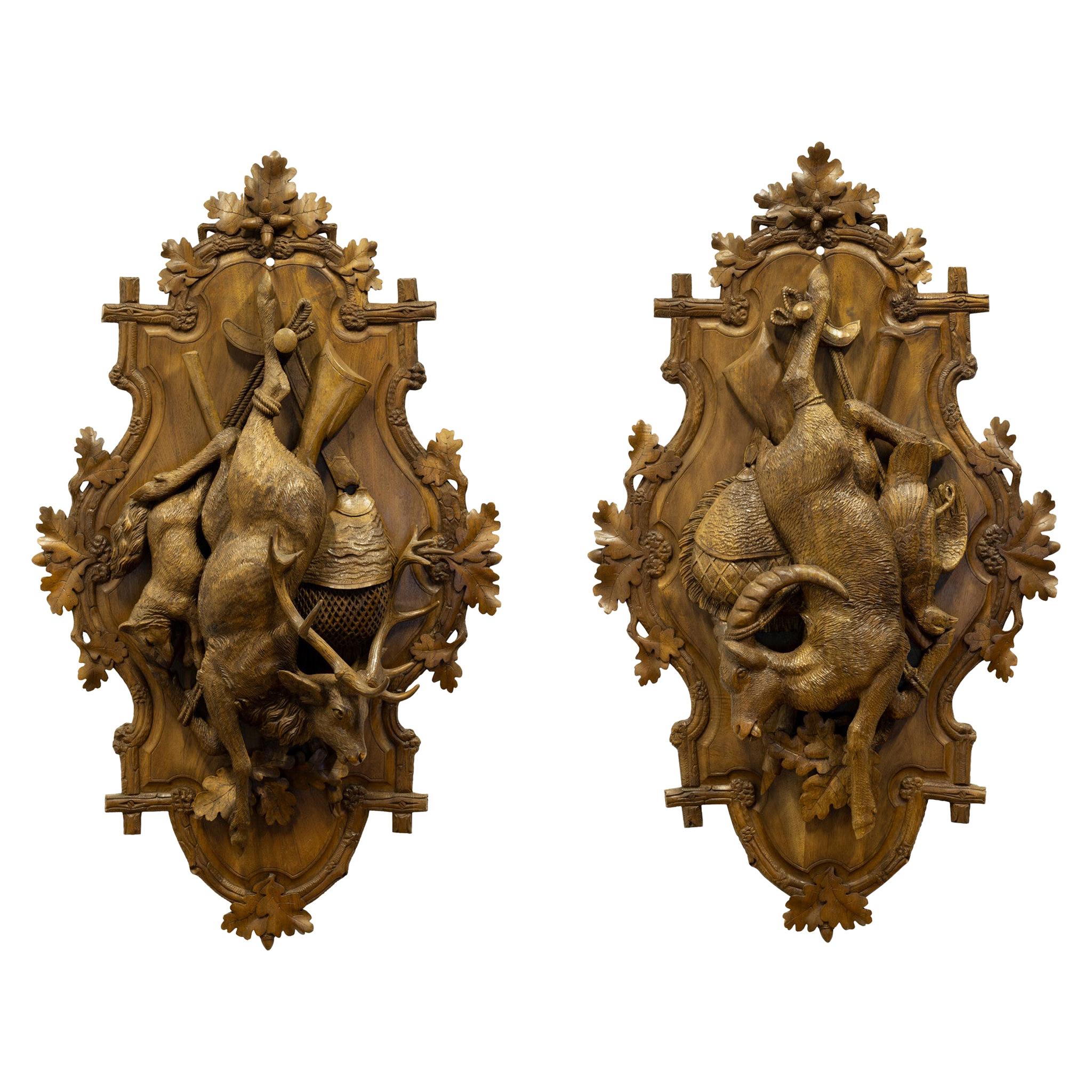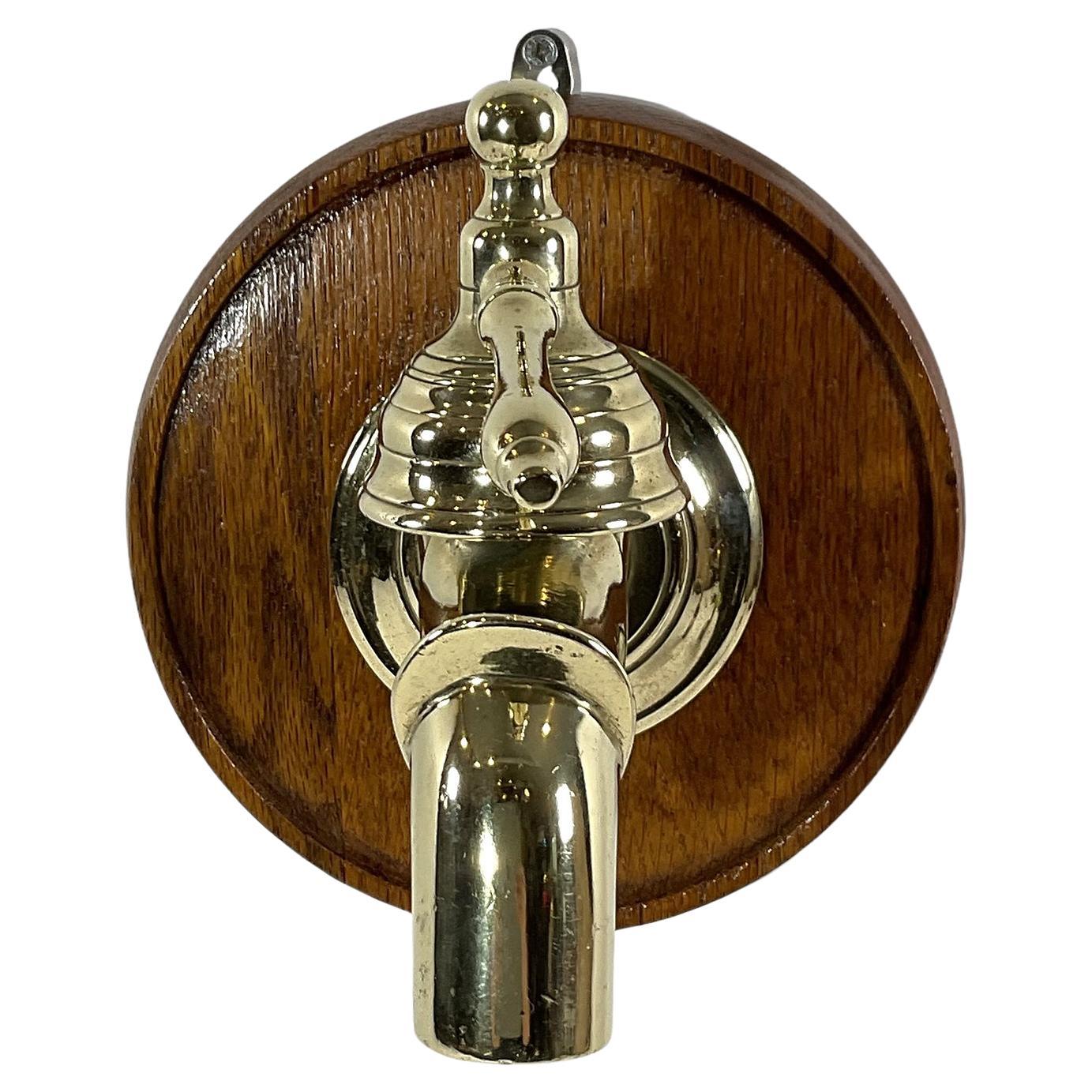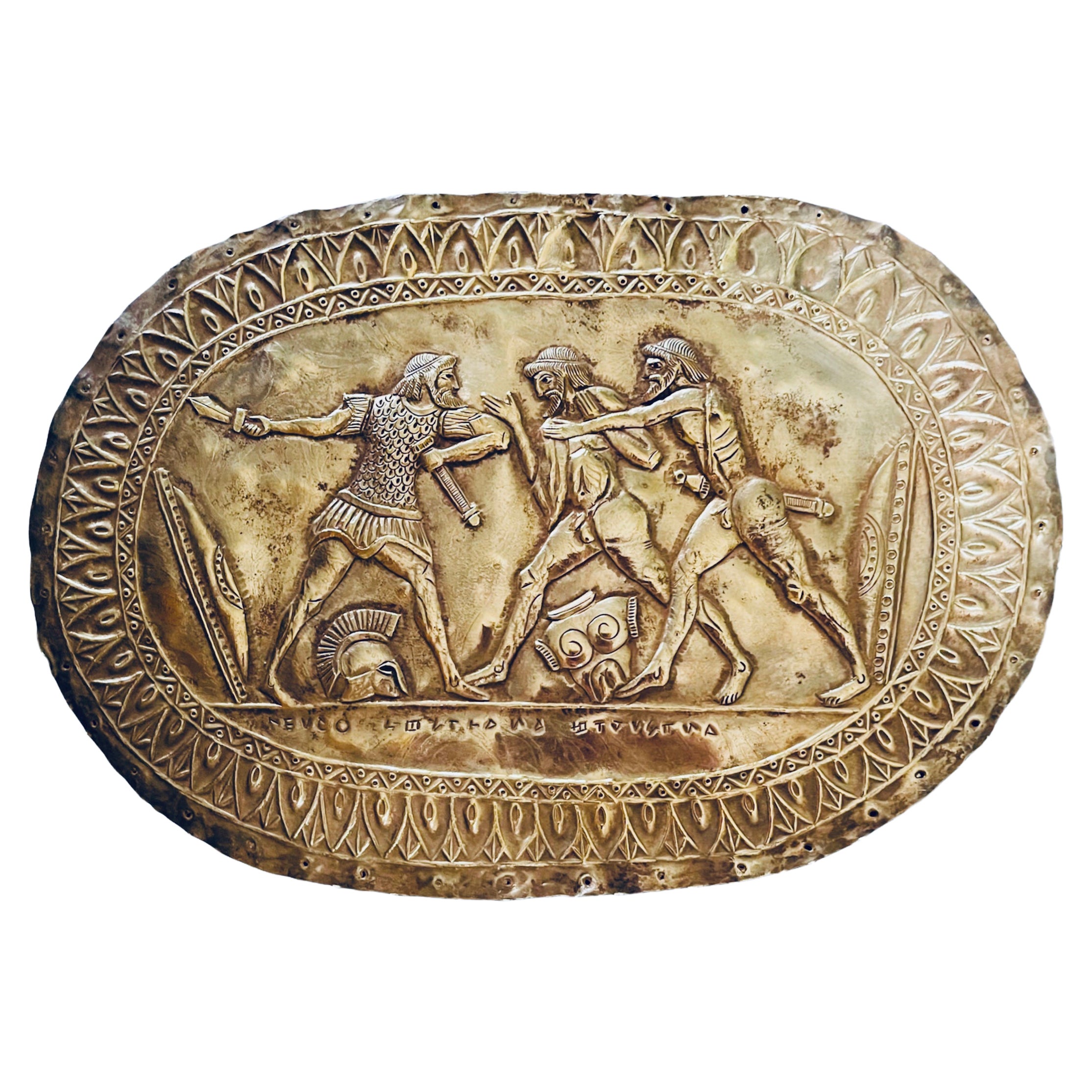Items Similar to Historic Rare Carved memorial plaque made by Jewish internee in Cyprus, 1948
Want more images or videos?
Request additional images or videos from the seller
1 of 21
Historic Rare Carved memorial plaque made by Jewish internee in Cyprus, 1948
About the Item
super rare and historic example of Cyprus stone carving, made by jewish holocaust surviver that was Detained at the Internment camps in Cyprus, just 3 years after the holocaust. this piece is very unusual, most of this carvings shows us aspects of living in the Refugee camps or zionist views of israel, sometimes they even made judaica objects like menorahs Or Candlesticks, but its rare to find memorial plaques such as the example in front of us, the plaques was Damaged In the way to israel and two pieces from the upper section were broken off, the middle part of the Plaque shows a Scroll shaped memorial plaque with the inscription : "for the dead who died on the name of god" In red color, the middle has a yellow star carved and painted, just like the yellow star jewish people were forced to Wear on the holocaust, under this inscription there are 5 yiddish names and near them the passing dates, first 3 Has the exact dates but the last two has just the name of the hebrew month (most of the survivors did not know There family members exact date of death in the holocaust) .
the back side has a scratched inscription in hebrew "cyprus 1948" in hebrew ״קפריסין 1948״
On the right side there is a carved candle on top a carving which is now missing and was broken off. The most important and touching part of this plaque is the lower part:
On the right there is a writhing in hebrew that says "past" ״עבר״ and the carving of a crematorium with an electric Fence in the background, the crematorium looks exactly like the one that was used in the Buchenwald death Camp so maybe the carver made it from his memory, on the top of the building there is a big chimney and from it There is a big smoke line going out, inside this smoke there is the number 6000000, for the six million jewish lives Murdered by the nazis in the holocaust. (this is one of the earliest depictions of this number, we know now that the Number was set around 1945, just at the end of the war)
In the middle carving it is written "present" ״הוה״ and we can see the actuall cyprus internment camp, there is a small hut or a tin building and a big guard tower on top, its important to see that the fence is conecated to the fence of the death camp to the right, this shows us that the people held in the camp by the british army felt like they are moving from one camp to the next one.
the last carving says "future" ״עתיד״ and there we can see the plowed field and a house on a hill, with some trees and again a tower, but this time the tower is a water tower, which Symbolize life, the first tower was the chimney that took part in the murder of our people, the second tower was used by the english army to keep us far from our home last ISRAEL, but the last tower is a water tower, which gives life and his built on top of the plowed hill of what look like a kibbutz.
condition is like stated, the plaque is in its original found condition, upper part is missing, some defects to the remaining part, a latter is missing to the lower section, a lot of scratches. but this artifact came from a very hard time in history and every scare on it brings us a part of history, museum quality object.
Size :
Height : cm: 18.5 / inch 7.2
Width : cm: 15 cm / 5.9 inch
As waves of refugees from World War II made their way to the Land of Israel, the British were forced to find a solution for the influx of immigrants. The detention camp in Atlit was filled to capacity. As a result, additional camps were built in Cyprus, also under British control at the time, in 1946 and 1949. There, tens of thousands of Jews awaited government approval to enter the Land of Israel. A dream, which would eventually come true.
The Cyprus internment camps were camps maintained in CYPRUS by the British government for the INTERNMENT of JEWS who had immigrated or attempted to immigrate to MANDATORY palesting in violation of British policy. There were a total of 12 camps, which operated from August 1946 to January 1949, and in total held 53,510 Jews.
The British understood that they could not treat the Jewish refugees as ordinary prisoners and, therefore, allowed the detainees a certain level of autonomy. With the help of large donations from the Land of Israel and Jews across the world, the Jewish leaders in the camps tried to create a semblance of normal life for the refugees. Part of setting up this new order was the creation of jobs and societal roles within the camps.
Within the confines of the barbed-wire fences, cultural, welfare, educational and religious activities were established and organized in an attempt to recreate routine, daily life. Naturally, nurturing the children of the camp was at the center of community priorities and values.
An expression of what life was like in the camp for the children which also tells us something about their mindset, can be seen in this stone carving. There was no shortage of stone available in the Cyprus camps, and it was soon utilized in the children’s educational frameworks, which included the art of stone carving.
- Dimensions:Height: 7.2 in (18.29 cm)Width: 5.9 in (14.99 cm)Depth: 0.8 in (2.04 cm)
- Materials and Techniques:
- Place of Origin:Cyprus
- Period:
- Date of Manufacture:1948
- Condition:Wear consistent with age and use. the plaque is in its original found condition, upper part is missing, some defects to the remaining part, a latter is missing to the lower section, a lot of scratches. but this artifact came from a very hard time and every scare is part of history.
- Seller Location:Tel Aviv - Jaffa, IL
- Reference Number:1stDibs: LU8130238063762
About the Seller
No Reviews Yet
Vetted Seller
These experienced sellers undergo a comprehensive evaluation by our team of in-house experts.
1stDibs seller since 2023
- ShippingRetrieving quote...Ships From: Tel Aviv - Jaffa, Israel
- Return PolicyThis item cannot be returned.
More From This SellerView All
- Important and rare jewish silver Sivlonot /wedding belt, Frankfurt 1707-1723Located in Tel Aviv - Jaffa, ILImportant and rare Sivlonot belt, gilded silver, made by the famous silversmith Johann Mathias Sandrat active in 1707-1723 in Frankfurt, Germany. this JUDAICA object is a museum piece and An almost identical belt with a replaced buckle is exhibited in the Israel museum and came from the important Feuchtwanger Collection, purchased and donated by Baruch and Ruth Rappaport, Geneva. the belt also bears 2 Christies auction stickers with the number 120, probably lot # 120, indicating it was sold in one of their auction rooms at some point. Sivlonot (wedding) belt: In Rabbinic literature, sivlonot refers to gifts the groom gave his wife-to-be. Among German Jews...Category
Antique Early 18th Century German Sterling Silver
MaterialsGold Plate, Silver
- rare Silver picture frame, Bezalel School Jerusalem, Zeev Raban, Israel, JewishLocated in Tel Aviv - Jaffa, ILThis is an important and super rare picture frame, all hand made from silver, by the way the work was done and by the design it was hand made by Zeev Raban, in the last picture you c...Category
20th Century Israeli Jugendstil Picture Frames
MaterialsSilver
- extremely rare Algerian Judaica silver, jewish Dowry box early 19th centuryLocated in Tel Aviv - Jaffa, ILAmazing and scarce JUDAICA object, we have here one of the most touching jewish objects we had for a long time, this small silver dowry box was made in Algeria in the early 19th century, it is all covered with symbols of jewish faith and of couples, the sliding lid has 2 flanking birds with hamsa (protective hand) on each side and a flower vase in the middle. one side shows two flanking lions with a tree in the middle and the other side shows again two big and two small birds with a flower bowl in the middle, front side has a key hole and next to it there is the Hebrew inscription ס״ט״" which says Siman tov or in English "a good sign" it is taken from the wedding blessing, underneath the lock there is another inscription with the name ״עזיזה בת אברהם בן חמו״ which is the name of the bride, her father and her grandfathers name. the box is full marked a lot of times with the silversmith mark, every side of the box is marked. this box was probably ordered by the grooms family to hold the jewelry they are giving to the bride as dowry, this type of objects are rare and there are just a few of them on museum collections. DOWRY (Heb. נְדֻנְיָה), the property a wife brings to her husband at marriage; the Yiddish equivalent, nadn, is from the same root. The custom of nedunyah became clearly defined and institutionalized only in the talmudic period. In biblical times, mohar (מֹהַר), whereby the groom bought his wife from her father (Gen. 24:53; Ex. 22:15–16; Hos. 3:2), was the accepted practice. It was then customary that the groom give the bride gifts, and that she bring certain property to her husband's home upon marriage: slaves, cattle, real estate, etc. (cf. Gen. 24:59–61; 29; Judg. 1:14ff.; I Kings 9:16). Evidence of the custom of nedunyah is to be found in Tobit (7:14; 8:21) and in the Assuan papyri (Cowley, Aramaic, nos. 15, 18). Gradually, mohar was superseded by the ketubbah custom according to which the husband merely assumed the responsibility of compensation to his wife in case he divorced her: he had to pay her 200 zuzim if she had been a virgin at the time of marriage, and 100 zuzim if a widow or divorcée (see *Ketubbah). By talmudic times, the institution of nedunyah was prevalent; the father gave a dowry to the bride since the daughter was excluded from paternal inheritance. Fifty zuzim (equivalent to the worth of 180 grams of silver) was the minimum amount a father was obliged to give to his daughter (Ket. 6:5). Parents usually gave much more, according to their social standing. Community funds provided the dowry for an orphan or a very poor girl (ibid.; cf. Sh. Ar., YD 251:8). In case of her father's death, the brothers of a minor girl were obliged to give her the minimum dowry, and the court estimated how much her father would have given her above the minimum dowry. The sum was then taken out of the father's estate and given to the daughter upon majority (Ket. 6:6; 68a–69b). In the absence of such an estimate, each daughter was entitled to receive one-tenth of the value of her father's estate in money, or in valuables (Yad, Ishut, 20:4–7; Sh. Ar., EH 113:4). If the father was unable or unwilling to pay the promised dowry at the betrothal ceremony, the groom could refuse to marry his bride (Ket. 13:5; Ket. 108b–109a). Insistence on exact payment of the promised dowry, however, was frowned upon by later rabbinic authorities (Rema to Sh. Ar., EH 2:1). In certain communities it was customary for the groom's father to make a dowry contribution equal to that of the bride's father (Ket. 102b). The dowry, whether given in real estate, slaves, money, or chattel was recorded in the marriage contract (the ketubbah) and in some instances one-third or one-fifth of the actual value of the dowry was added to the sum mentioned in the ketubbah. Based upon a decree enacted by *Simeon b. Shetah (first century C.E.), the Talmud ruled that the husband and his entire property were liable for compensation as stipulated in the ketubbah, either in case he died (when she collected the sum specified in the ketubbah from the heirs) or in case he divorced his wife (Ket. 82b). For the status of the dowry and the husband's rights and obligations, see below. The rabbinic enactments (Takkanot Shum) by R. Jacob *Tam and by the rabbinic synod of the communities of Speyer, Worms, and Mainz (Germany) stipulated that if a woman died...Category
Antique Mid-19th Century Algerian Tribal Art
MaterialsSilver
- Rare Daum Nancy Wheel-Carved Rose 'La France' double overlay Cameo Glass VaseBy DaumLocated in Tel Aviv - Jaffa, ILThis wonderful, elegantly shaped with a flared rim vase , by Daum Nancy, features wheel-carved cameo glass of the highest quality detailing an amazing pink roses, or rose of France ...Category
Vintage 1910s French Art Nouveau Vases
MaterialsArt Glass, Blown Glass, Cut Glass, Opaline Glass
- Silver Hanukkah Lamp made by Eli Gera, modern Judaica, Israel, Tel Aviv 1970s.Located in Tel Aviv - Jaffa, ILVery rare and important piece of Israeli modern Judaica, a bauhaus style silver Hanukkah Lamp made by the famous jewish silversmith Eli Gera, made from hand bent And hand Forged silver in the 70s, while other works by Gera were multiplied by him, from What we Know this piece is a one of a kind. Marked "SILVER 925" and ELI GERA in Hebrew and English on a small silver plaque on the base. Measurements: Height: 3 inch / 7.6 cm Width: 11.8 inch / 30 cm Depth : 3.3 inch / 8.5 cm Condition : Perfect condition for its age, no brakes, no restorations, some minor scratches and age Related wear About the artist : Please note the Victoria & Albert Museum in London holds an Hanukkah lamp Havdalah Set...Category
Vintage 1970s Israeli Bauhaus Sterling Silver
MaterialsSilver
- A RARE SILVER SHMIROT KIDDUSH CUP. Galician, c. 1850.Located in Tel Aviv - Jaffa, ILA RARE SILVER SHMIROT KIDDUSH CUP. Galician, c. 1850. Among some Hassidic courts, it was a practice for the Rabbi to give a blessed silver coin to his Hassidim as an amulet. Such protection might be given for all manner of life events, from healing from an illness to success in travel and the amulet was carried on the body of the recipient. This custom was particularly popular among the Ryzhiner Hassidim and these coins were called "Shmirot". To such coins were attributed extraordinary power and value and they were treasured with great care and love. this cup is marked with polish loth 12 mark which indicate silver content of 75%. Size : Height 2.3 inch / 6 cm Width : 2 inch / 5 cm After the specific event for which they had originally be given, such a coin or coins were used in the making of other objects, which maintained the special aura of the Rabbi. Such a coin would be melted in other silver with the amuletic valued being spread evenly to all the silver. Then a ritual object would be fashioned by a silversmith and the special nature of the item would be inscribed on it, indicating in one of several ways that this object had been made from "Shmirot". this objects include Kiddish cups, a Havdalah tray, a Shabbat salt holder, a Chanukkah Menorah, a Torah crown etc. This object is a Kiddish cup fashioned from such silver. On this cup, the inscription indicating Shmirot is found in the abbreviation of the words "made from shmirot k (kodesh)' " (This is the cup of Shmirot). Such cups were used for blessing the wine so that each use renewed the power of protection granted by the Rabbi. This cup was used for the blessing over wine on Shabbat and holidays. Inscription: the other iconography on the cup is of a lion that represent Through the tribe of Judah, the lion symbol came to represent the blessing, majesty, and even divine protection of the Jews. The lion symbol continued to be used even after the destruction of Jerusalem, the capital of Judah's nation, and a unicorn or a re'em, also reëm (Hebrew: רְאֵם), is an animal mentioned nine times in the Hebrew Bible It has been translated as "unicorn" in the Latin Vulgate, King James Version, and in some Christian Bible translations as "oryx" (which was accepted as the referent in Modern Hebrew),[citation needed] "wild ox", "wild bull", "buffalo" or "rhinoceros". Rabbi Natan Slifkin has argued that the re'em was an aurochs, as has Isaac Asimov...Category
Antique 1850s Sterling Silver
MaterialsSilver
You May Also Like
- Black Forest Carved Bird PlaqueBy Black ForestLocated in Coeur d'Alene, IDSwiss carved walnut plaque with game bird and two chicks with vine and leaf design. Part of the Brienz Collection but not published. Period: circ...Category
Vintage 1920s Swiss Black Forest Wall-mounted Sculptures
MaterialsWood
- Pair Black Forest Carved Hanging Game PlaquesBy Black ForestLocated in Coeur d'Alene, IDMatched pair of Black Forest linden wood hanging game plaques. One with chamois and grouse, the other red stag and fox. Both complete with rifle and game ...Category
Antique Early 1900s Swiss Black Forest Wall-mounted Sculptures
MaterialsWood
- Very Rare and Early Carved Vessel in the Form of a HedgehogLocated in London, GBA Very Rare and Early Carved Vessel in the Form of a Hedgehog Alabaster Near Eastern 3rd Millenium BC SIZE: 9.5cm high, 9.5cm wide, 15.5cm deep - 3¾ ins high, 3¾ ins wide, 6 ins ...Category
Antique 15th Century and Earlier Antiquities
MaterialsAlabaster
- Solid Brass Spigot Mounted to a PlaqueLocated in Norwell, MASolid brass spigot with gate lever. Mounted to a varnished wood board. Heavy, sturdy and decorative. Circa 1920. English, great brewer mania item for a bar.Category
Vintage 1920s European Antiquities
MaterialsBrass
- Large Greek Style Repousse Oval Metal PlaqueLocated in Guaynabo, PRThis is a large Greek style repousse oval metal plaque depicting a scene of a Spartan warrior trying to defend himself against two nudes warriors from another tribe. There are two shields standing at each side of them. There are also a Spartan helmet...Category
20th Century Greek Greek Revival Historical Memorabilia
MaterialsMetal
- Italian Carved Solid Walnut Kneeler from 1600s in PatinaLocated in Cesena, FCLombard / Venetian kneeler from the 1600s, in patina Solid walnut with Greek carved details under the top and capital feet Drawers panelled in briarwood...Category
Antique Mid-17th Century Italian Antiquities
MaterialsWalnut





